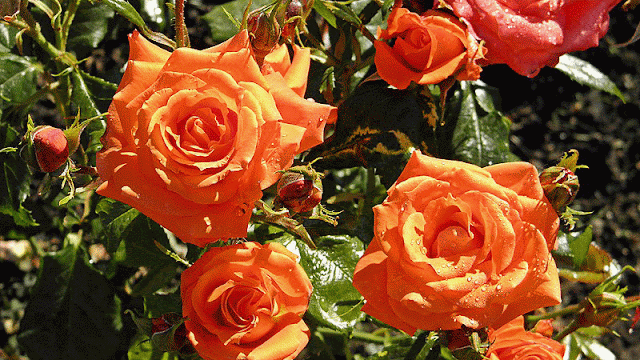Growing Herbs: Tips and Care for Your Herb Garden in Pots
Do you love cooking with fresh herb plants? There's no better way to ensure a steady supply of herbs than to grow them yourself! Creating your own herb plants is a fun and rewarding project that anyone can do, no matter how much space you have.
Start Growing Herb Plants
Herbs not only add flavor and aroma to your cooking but also have a range of health benefits. For instance, basil is a good source of vitamin K, which is important for bone health, while mint can help soothe digestive issues. You can consider adding some herb plants to your garden.
Tips and Caring for Herb Plants
Choose Your Herb Plants
The first step to creating your own herb garden is to decide which herbs you want to grow. Some popular options include basil, thyme, rosemary, parsley, and mint. Think about the dishes you cook most often and choose herbs that complement those flavors.
For example, if you cook a lot of Italian dishes, you might want to grow basil and oregano. If you enjoy roasting meats, rosemary is a good choice. If you like to make tea, mint is a great option.
Top Popular Herb Plants for Your Garden
1. Basil
2. Thyme
3. Rosemary
4. Oregano
5. Parsley
6. Sage
7. Chives
8. Dill
9. Mint
10. Cilantro (Coriander)
If you're new to growing herbs and feeling overwhelmed by the variety of options available, it's best to start with a few easy-to-grow choices. Basil, cilantro (coriander), and mint are popular and beginner-friendly options that are perfect for adding flavor to a wide range of dishes. Plus, they require minimal maintenance and can be grown in pots or directly in your garden. So, pick up some seeds or seedlings, and get ready to enjoy the fresh and delicious taste of homegrown herbs!
Pick a Spot for Herb Plants
Herbs can be grown indoors or outdoors. If you're short on space, a sunny windowsill or balcony is a great option. For outdoor gardens, choose a spot with good drainage and at least 6 hours of sunlight per day.
Keep in mind that some herbs, like basil and parsley, prefer cooler temperatures and partial shade, while others, like rosemary and thyme, prefer full sun.
Get the Right Potting Mix for Herb Plants
Herbs need well-draining soil to thrive. Choose a high-quality potting mix or amend your garden soil with compost to improve drainage. Avoid using heavy, clay soils.
If you're growing herbs in containers, choose a pot that's at least 6-8 inches deep with drainage holes at the bottom.
Water Herb Plants Wisely
Proper watering is crucial for the health of your herbs. It's important to avoid overwatering as this can lead to root rot and other problems. To determine when to water, simply stick your finger into the soil up to the first knuckle - if it feels dry to the touch, it's time to water. Use a watering can or drip irrigation system to apply water at the base of the plants, avoiding getting water on the leaves which can promote fungal diseases.
If you're growing herbs indoors, it's important to maintain adequate humidity levels to keep them healthy. One way to do this is by placing a tray of pebbles and water underneath your herb pots. This creates a humid microclimate around the plants and can help prevent problems like leaf drop and wilting. Don't forget to regularly check the soil moisture levels and water your plants accordingly.
Harvest Herb Plants Regularly
Harvesting your herbs regularly will encourage bushier growth and keep them from getting too leggy. Snip off the top few inches of stems, leaving a few sets of leaves behind. You can use fresh herbs right away, dry them for later use, or freeze them in oil or water.
It's best to harvest herbs in the morning when their essential oils are most concentrated. Avoid harvesting more than a third of the plant at one time, as this can stress the plant.
Watch for Pests for Herbs
Herbs are relatively pest-free, but keep an eye out for common issues like aphids and spider mites. Use organic pest control methods like neem oil or insecticidal soap if necessary.
Enjoy Your Herb Garden's Bounty
Once your herbs are thriving, it's time to put them to use in your cooking! Fresh herbs can elevate the flavor and fragrance of any dish, and having them within reach is incredibly convenient, especially if you've created a container garden.
Experiment with making basil pesto, adding parsley as a soup or stew garnish, or infusing water with mint for a refreshing twist. The options are limitless!
Developing your own herb garden, whether in a container or not, is an uncomplicated and fulfilling endeavor that anyone can undertake. With only a few supplies and a little patience, you'll have access to fresh herbs that can enhance the taste of your cooking.














